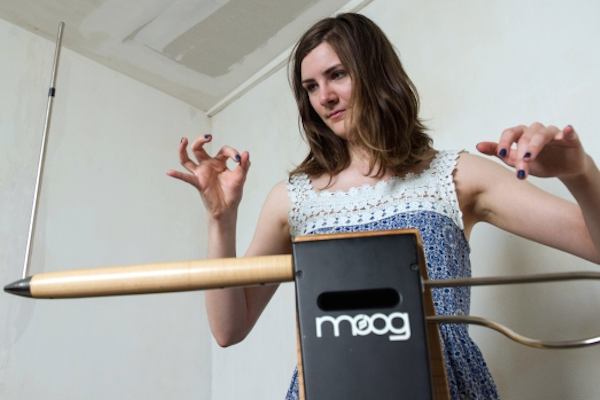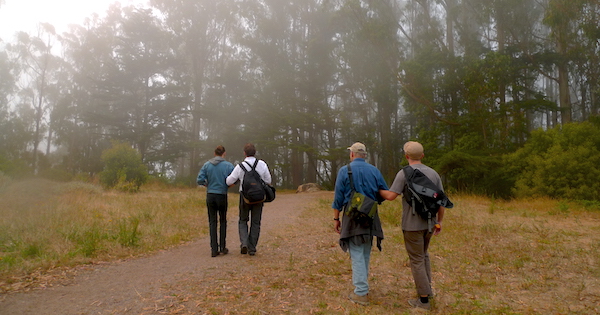
There is only one single copy of the Wu-Tang Clan’s newest album, The Wu – Once Upon a Time in Shaolin, that has seen the light of day.
The Wu-Tang Clan will auction this handcrafted album off after an international museum listening tour, and bids are already coming in exceeding $5 million. This single copy is encased in a hand-carved silver and nickel-plated box, designed by the Moroccan artist Yahya and accompanied by ornate, artful gifts for the future owner, including a handmade leather-bound book, a custom engraved stamp with wax-seal, and various certificates of ownership dually signed by Artist and Purchaser.
For a glimpse of the album and to read more about it, visit scluzay.com. Forbes Magazine was granted inside access to the album in its current residence at the famous Hotel Mansour in Marrakesh, you should really watch this video too.
To the Wu-Tang Clan, it’s a singular work of art on par with an original Van Gogh.
Both the principle producer, Tarik “Cilvaringz” Azzougarh, and the group have gone to great lengths to make sure no leaks are possible. Firstly, and courageously, they recorded everyone’s tracks to bpm-synced substitute beats (the performers hadn’t even heard the final beats until the record was mixed), deleted the source tracks and final mixes from all known hard-drives, and hid the album in a number of secure institutional locations around the world.
As expected, this album has almost everybody up in arms, siding one way or the other. There is no label. There are no distributors and no digital copies. To the Wu-Tang Clan, it’s not even an album but a singular work of art on par with an original Van Gogh or one of Shakespeare’s manuscripts. And at the price it will eventually be purchased for, who’s to argue with that?
+ Read more: “5 Times Artists Have Changed the World”
Yet, just because somebody with deep pockets purchases something for an exorbitant price, doesn’t guarantee that it will be widely-accepted as a work of art. There have been numerous forays into “fine art” for pop musicians as of late, some of which, in hindsight, were nothing more than marketing stunts to sell more mass-produced album copies.
Remember when Jay Z got some celebs and artists like Marina Abramovich, Alan Cumming, and Jim Jarmusch together which a bunch of very lucky fans to film “Picasso Baby: A Performance Art Film” at the PACE Gallery in 2013? Jay Z set out with the stated intention of bringing the arts back together with hip-hop, in a way they had been when Fab 5 Freddy and Madonna were hanging out with Basquiat. But didn’t it feel kind of… forced?
I mean, I would’ve loved to have been there, and I would’ve relished that sacred moment of being in bodily proximity to Jigga. But what did Jay Z really do here that is so unlike the typical process of recording and producing an album, and then throwing a killer party to release it?
The mission is to change the conversation about music’s place in art and high culture.
Jay Z sings, “I’m the modern day Picasso, baby” and makes reference to works of modern art all over his Magna Carta Holy Grail album. The album art is a photographed 16th century Italian statue from the Metropolitan Museum of Art. It’s clear that the mission here is to align himself with these groundbreaking historical art events in order to change the conversation about music’s place in contemporary notions of art and high culture.
And that conversation is absolutely an essential one.
Yet the question of commerce is also a factor, and Wu-Tang’s refusal to sell more than a single copy of the album bears a much stronger resemblance to the practices of creative commissioning and artistic production of the Renaissance. No distribution.
And then there’s Björk’s 2011 concept album Biophilia. By all accounts, this is one heck of a gesamtkunstwerk! The album was conceived and recorded between 2008-2011, inspired somewhat by the work of her environmental organization, the Náttúra Foundation, and explores the links between nature, technology and music. The album was also released on ten interactive mutimedia apps (one per song) that link the themes of the album to concepts in musicology.
In order to drive both the concept and content home to audiences in meaningful ways, Björk tied collaborations, events and experiences together into the Biophilia project. Instruments that respond to smart technology and Earth processes like gravity and electricity were invented and manipulated and used throughout the recording of the album. She even manipulates her lyrics to fit with the general scientific discussions about some topics, like in “Dark Matter”, her lyrics have been scrambled like gibberish since little is known beyond speculation of this phenomena.
Björk was completely reinventing the way music is made, talked about, and experienced.
She toured the world giving educational workshops and lectures. Her world tour featured visual art, experimental dance and performance art. And she even relaunched her website in May 2011 using an HTML5 “constellation” that shifted in the viewer’s perspective as they moved the cursor. One could hardly call this a marketing stunt. Björk was completely reinventing the way music is made, talked about, and experienced, all with the mission of building awareness and consciousness about Earth science and the changing environment.
Okay all this is super cool, but the thing is that Björk says, “first and foremost, Biophilia, is an album”. No matter how we view the creation and dissemination of the album and its concepts, it is true that Biophilia, like Magna Carta Holy Grail, is fundamentally available as a mass-produced musical product. The ingenuity and approach that went into these albums may end up influencing as many people as, say, Sgt. Peppers or Metal Machine Music, or Graceland, but they are all in the same family.
Does the solitary fact that Once Upon a Time in Shaolin eschews all forms of distribution and mass-listenability effectively set it apart from its counterparts? I’m not sure the answer is yes, but I would argue that it’s at least a very good step in that direction.




